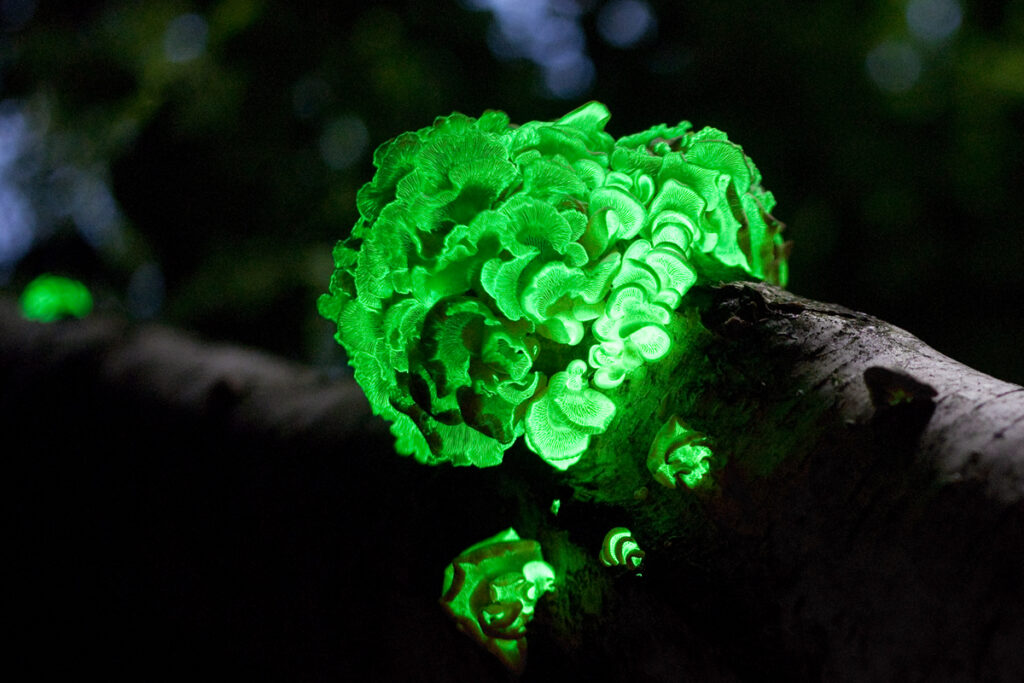April 7, 2022
Fun Fact: The controls of the first combat submarine were illuminated by mushrooms.
The submersible, named “Turtle” was invented by Yale College undergrad David Bushnell in 1775 and has a documented record of use in combat during the American Revolutionary War. The design allowed the operator to affix an explosive charge to the hull of a ship and tootle away (at a max speed of 3 mph) before the charge exploded. It was also the first submersible to use water as ballast, the first to be equipped with a breathing device, and the first to demonstrate that gunpowder could be exploded underwater. It also used foxfire from bioluminescent fungi to illuminate the needles on its internal instruments so that they could be read in the dark.
Foxfire (derived from the French ‘faux’ for false) is the bioluminescence created by some species of fungi. It occurs in a number of species including Panellus stipticus (below), Omphalotus olearius, and O. nidiformis. The blueish-greenish glow is attributed to luciferin, which emits light after oxidation catalyzed by the enzyme luciferase. The earliest record of foxfire is from 382 BC, by Aristotle. He described a light that, unlike fire, was cold to the touch. Depending on the species, the light emitted can be bright enough to read by. Some scholars attribute foxfire to the will-o’-the-whisp phenomenon described in English folklore, but under different names, is also part of the folklore of Scotland, Ireland, Wales, Canada, the US, Mexico, Brazil, Argentina, Columbia, Venezuela, Uruguay, Trinidad and Tobago, Bangladesh, India, Japan, China, Denmark, Finland, Sweden, Estonia, Latvia, Lithuania, Australia, and probably more… pretty much everyone.
Despite its glowing dials, Turtle was never successful in battle. The Americans thought that it reflected both their ingenuity after the fall of New York and their tendency to adopt and embrace new, sometimes radical technologies. The British made no record of it.

